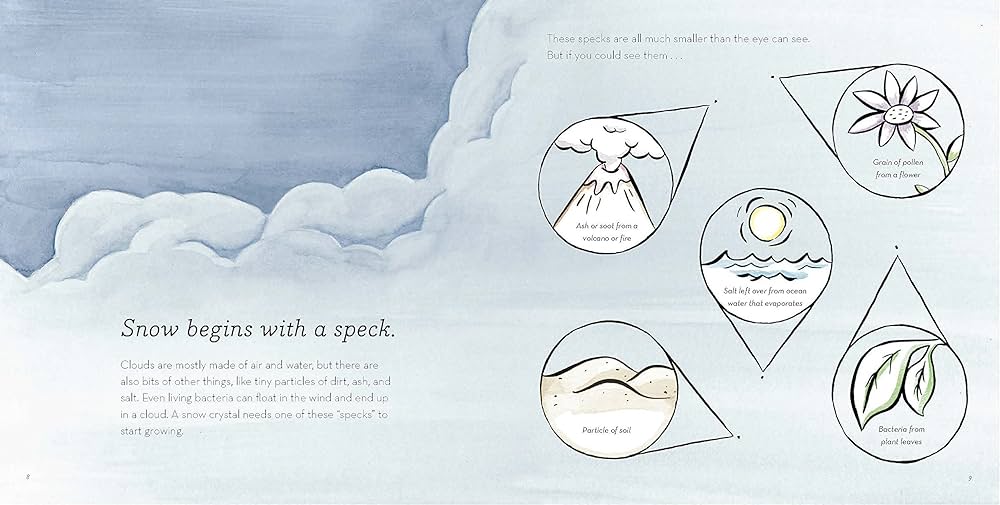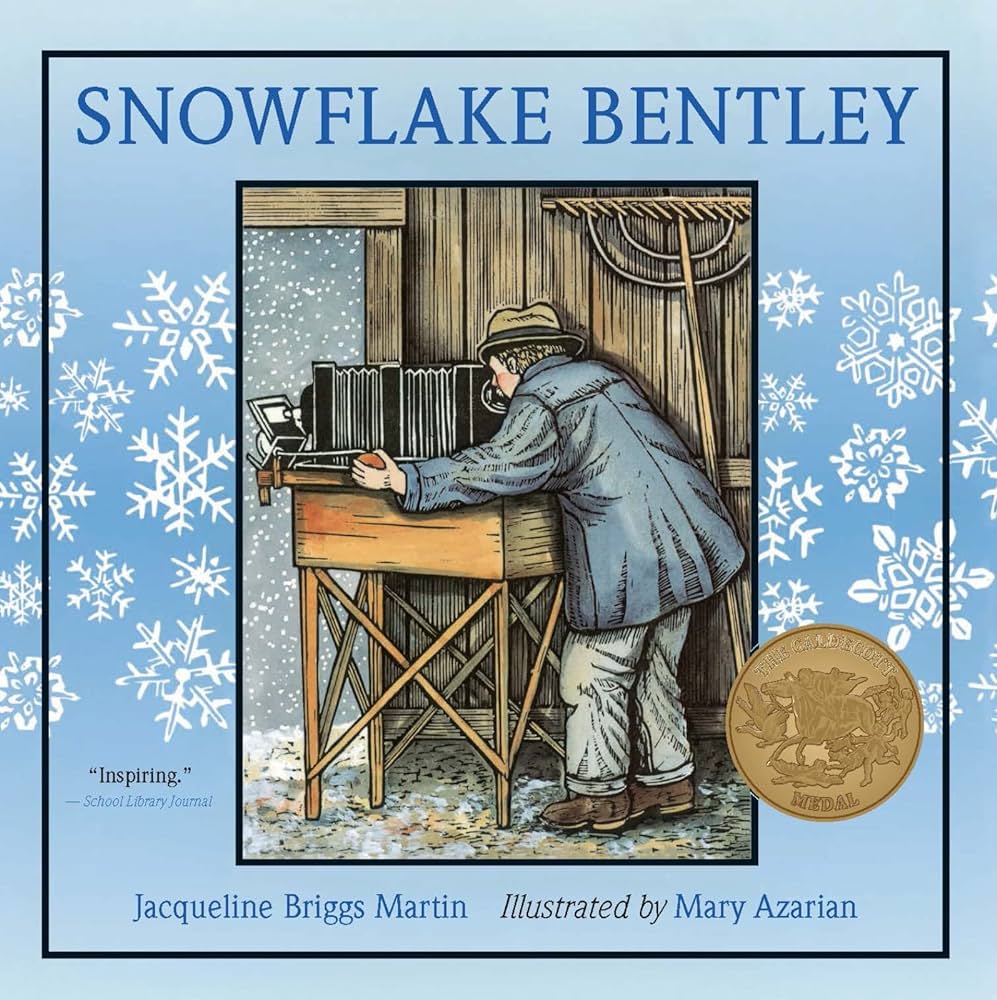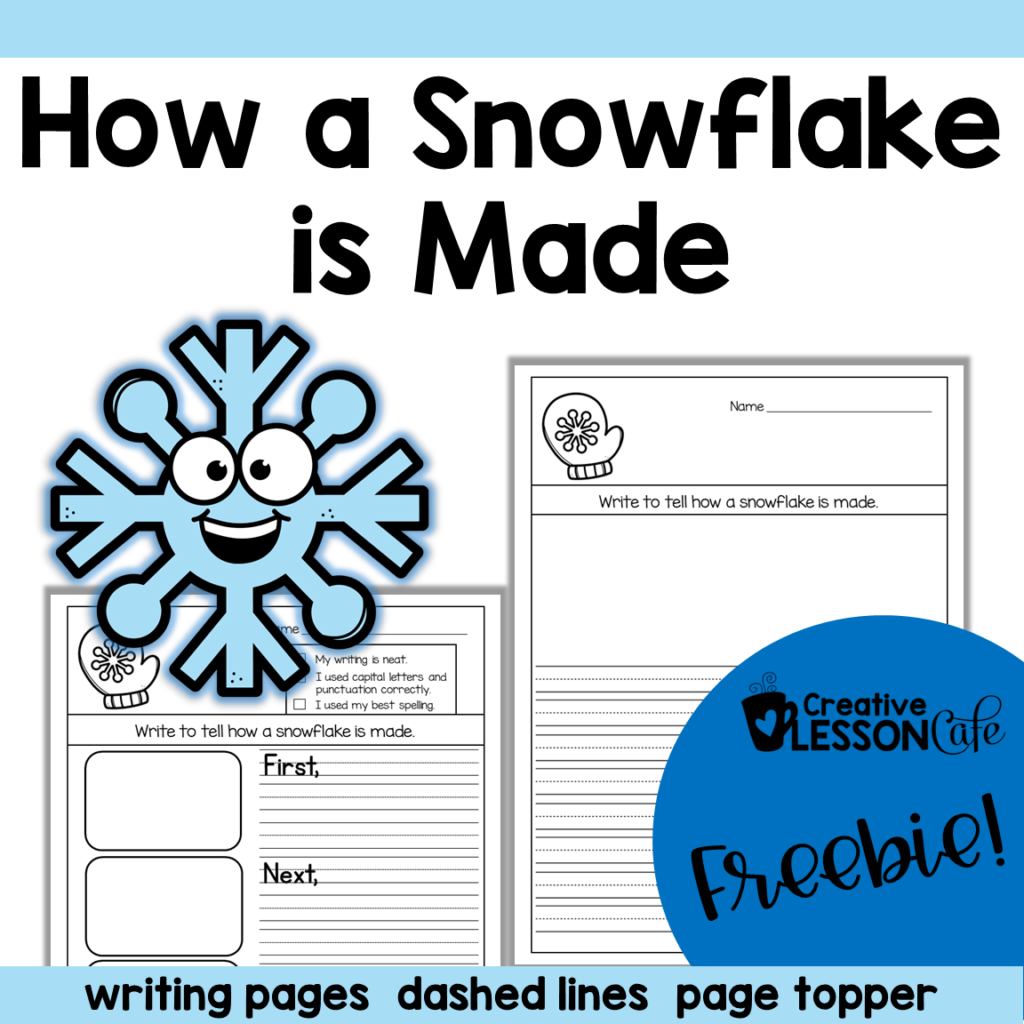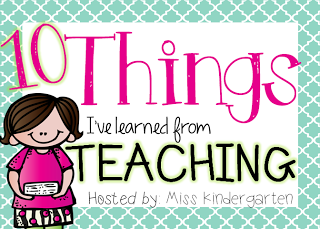Winter brings with it the magic of snowflakes! As elementary teachers, we have the incredible opportunity to turn the winter blahs into an exciting learning experience for our students. If you’re looking to spice up your winter science lessons and incorporate other subjects like reading and writing at the same time, this post is definitely for you. You can also grab a FREEBIE snowflake science writing and sequencing page you can use in your elementary classroom!
Let’s get started and explore engaging and hands-on ways to teach snowflake science through book recommendations, videos, STEM ideas, and downloadable teaching resources that you can use with your class right away!
Student engagement and building background knowledge are the keys to a great lesson opener. I like to begin every new science unit with a read loud book or video lesson to get students excited about the topic. Books and videos are also a great way to introduce basic facts and new vocabulary for the unit plan.
Children love read alouds, especially with books that are on a topic they really enjoy. There are two that I highly recommend because they have been a huge hit with my own students.
Favorite Snowflake Book Recommendations:
The Story of Snow by Mark Cassino and John Nelson, Ph.D This is an amazing book for elementary teachers to have in their classroom library! It’s most definitely a favorite with my second graders. There are lots of oohs and ahs from the room when students see what a snowflake really looks like. I LOVE the gorgeous photographs in this book.
The book includes a detailed explanation of snowflake formation and many interesting facts. It is written in language that is perfect for young learners!


Following every read aloud, I like to check for understanding with some follow up discussion questions. This can be done whole group, as partner talks or even in small groups. Here are some examples you can use with your class.
The Story of Snow – Question Stems for Discussion or Formative Assessment:
1. Explain why snow crystals need a speck to begin.
2. What are some types of “specks” that can form snow crystals?
3. Explain the steps that a speck goes through to become a snow crystal.
4. Determine the meaning of “sprouting” as used in page 12 of the story.
5. What two things determine the shape of a snow crystal?
Another class favorite , Snowflake Bentley, by Jacqueline Briggs Martin, tells the remarkable true story of Wilson Bentley, a Vermont farmer who became the world’s first snowflake photographer. It outlines the the life of Bentley, from his childhood curiosity for snowflakes, to his groundbreaking work in capturing their beauty through the lens of a camera.

Snowflake Bentley – Question Stems for Discussion or Formative Assessment:
1. What inspired Wilson Bentley to become the world’s first snowflake photographer?
2. What character traits can be used to describe Wilson Bentley?
3. How did Wilson Bentley’s work change our understanding of snowflakes?
These are must-have books if you are planning a snowflake science unit! If these are not yet in your classroom library, you can get your own copy of each of these through our Amazon affiliate links above. Both of these stories can be found on YouTube as well.
Speaking of YouTube, my class also loves videos and these short ones are perfect for those few minutes you have here and there and need a filler.
Snowflake Videos:
Have you discovered SciShow Kids on YouTube? Where Do Snowflakes Come From? is a short and engaging video that is a perfect intro to your snow science lessons.
Snowflake Science is also on BrainPOP. This one is best suited for older students because of the extensive vocabulary used.
This video is set to instrumental music and shows photography of the formation of several snow crystals. You can even see the speck around which it forms!
My favorite of all of them is from Mystery Science. If you are fortunate enough have an account you should check it out! In the activity, Wax Paper Snowflake, students create a decorative snowflake and investigate how to make something transparent look white. It also includes printables for this hands-on activity that answers the question, Why is snow white?
Once you’ve spent some time reading nonfiction books and viewing a few videos, your class will have learned many facts about snowflakes!
Independent Work:
So now, you can plan for some independent activities so students can show what they have learned about snowflakes!
Drawing and sequencing activities to demonstrate understanding of the “snowflake life cycle” are PERFECT on your own activities for first and second graders.
This FREEBIE would be great to have handy for your early finishers so they can illustrate and write about the stages in the formation of an ice crystal or… set it out at an independent writing station.

Download our sequencing writing activity [here] for a festive bulletin board display of student work and winter learning!
I hope you were able to get some great ideas here for your snowy science lessons! Incorporating snowflake science into your elementary classroom can be educational and fun!
By utilizing engaging books, videos, and hands-on STEM activities and independent work, you can make winter learning an experience your students will remember!
Don’t forget to check out our downloadable sequencing writing activity to showcase your students’ understanding and creativity on a winter-themed bulletin board. Let the magic of snowflakes inspire a season of curiosity and exploration in your classroom!
Happy Teaching!
For more winter fun, check out these posts:





